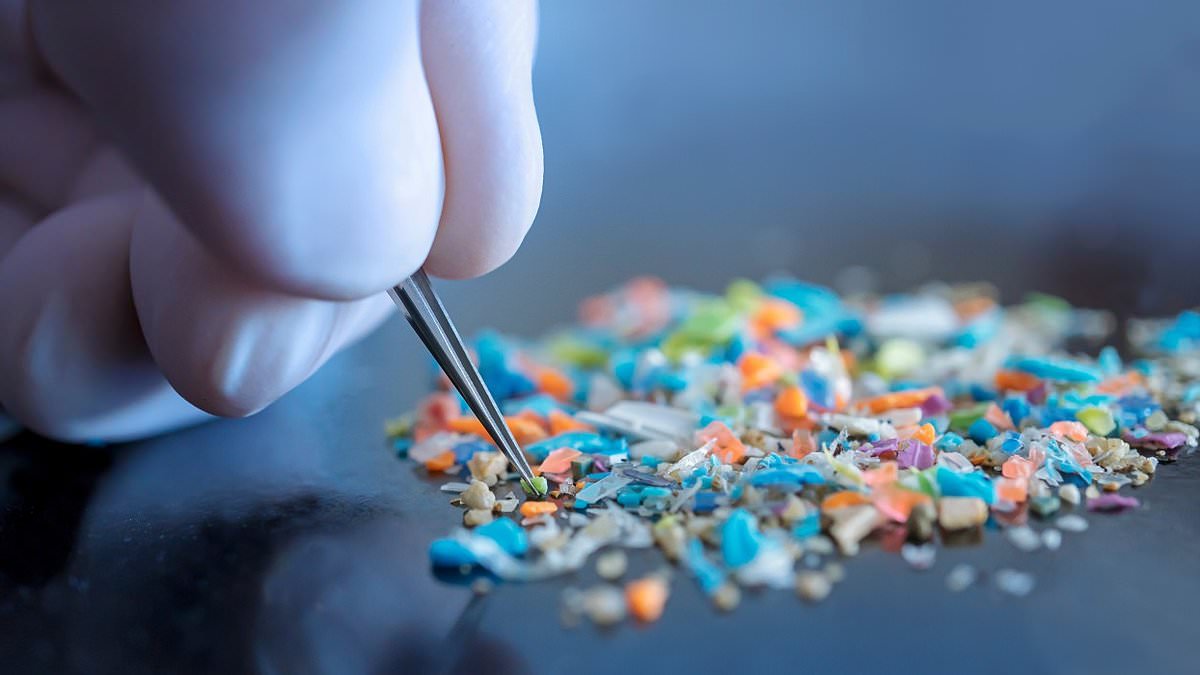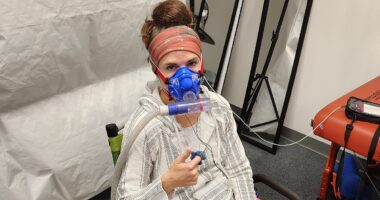Microscopic pieces of plastic in water have been linked to increased risk of physical and mental disabilities in worrying new research.
Experts suggest tiny pieces of plastic, called microplastics, could be entering the body through the environment and damaging the brain and nervous system.
In a study, researchers compared the concentration of microplastics in seawater in more than 200 locations in America.
They found areas with the highest levels had increased rates of mental and physical disabilities in the population.
While the experts didn’t name the conditions, people living in these areas had a 16 per cent higher risk of having a disability that prevented them looking after themselves.
The finding come amid reports of rising numbers of Britons and Americans suffering chronic, disabling illness.
In the past year alone, people with a long-term health condition rose by two per cent, which those classified as disabled rose by three per cent, UK Government data show.
The experts admitted that the new study cannot directly prove microplastics are causing the increased rate of disabilities, and said further research was needed.

Scientists, who compared levels of tiny pieces of plastic in water across different parts of the US, found the areas with the highest levels had increased rates of mental and physical disabilities
However the scientists said the increased risk remained even when factors like differing rates of heart disease and stroke, which might otherwise explain the results, were accounted for.
Dr Sarju Ganatra, Lahey Hospital and Medical Center in Burlington, Massachusetts, and an author of the study, said the findings provided important insight into how marine microplastics could be harming people’s brains.
People in high microplastic areas also had a nine per cent higher chance of having a mental condition that caused them to have problems with thinking and their memory.
And they had a six per cent higher chance of having a disability that impaired their ability to move.
Lastly, experts found people living in microplastic dense areas had an eight per cent higher chance of having a disability that prevented them from living independently.
This meant they needed help with managing their own finances, shopping or using transportation.
Dr Ganatra added that, if microplastics are found to be the cause of disabling illness, tackling the problem is likely to be a complex issue.
‘The amount of plastic in different areas can vary due to ocean currents, which can carry and concentrate plastic in certain regions,’ he said.

Experts say you can cut your exposure to microplastics by swapping out plastics in your home for natural materials, metal and glass
An additional limitation of the study is that the data only captures one single moment in time, meaning potential changes in microplastics levels and disability over time were not considered.
‘Other factors, like population density, local waste management, and industrial activities, may also play a role.
‘The reasons are complex and likely involve multiple environmental- and human-related factors working together, but this relationship needs further investigation to be fully understood.’
In the study, experts compared microplastic content in seawater by looking at the number of individual pieces found in a cubic metre of liquid in 218 coastal counties in 22 US states.
Areas with the highest levels of microplastics were found to have more than 1,000 pieces per cubic metre compared to less than 10 pieces in the areas with the lowest levels.
This isn’t the first study to link microplastics to brain damage with some research even suggesting the issue could be getting worse.
Earlier this month scientists analysing the brains of people who died in 2024 found the amount of plastic in their brains had increased 50 per cent compared to a similar study carried out in 2016.
Additionally, an analysis on human corpses last year found people who had died with dementia had 10-times the amount of microplastics by weight than healthy people, though this study was small with only 12 patients with the condition.
Adding to these concerns, in January Chinese researchers found microplastics could cause deadly blood clots to form in the brain, increasing the risk of strokes and psychiatric illness such as depression.
While the long-term effects of microplastics on human health remain unclear concern is rising in part because avoiding them is almost impossible.
A recent study even found using a single tea bag could release billions of dangerous microplastics into the body.
Microplastics are in the air, water, food, cosmetics and clothing and have been found in variety of human tissue including the intestines and even in men’s sperm.
The full findings of the study are to be presented at the American Academy of Neurology’s 77th Annual Meeting in April this year.










